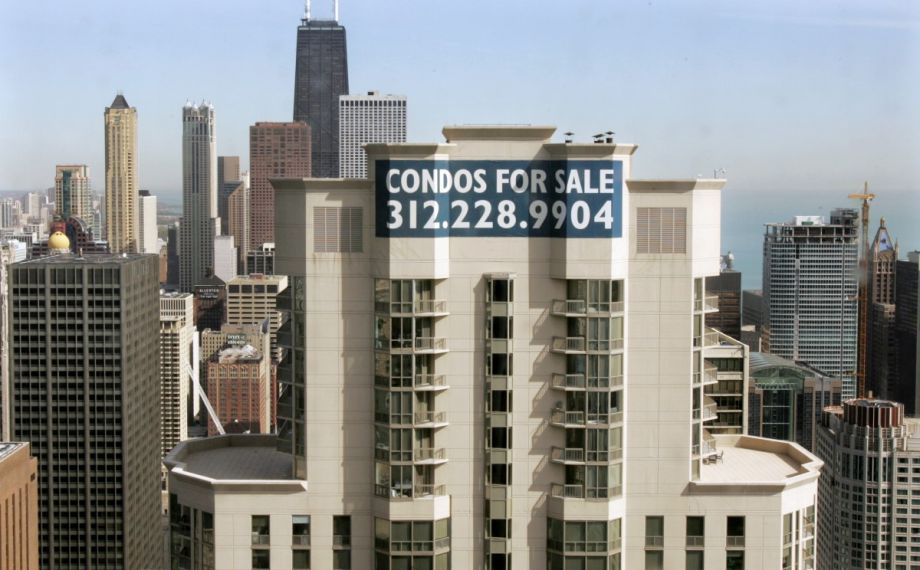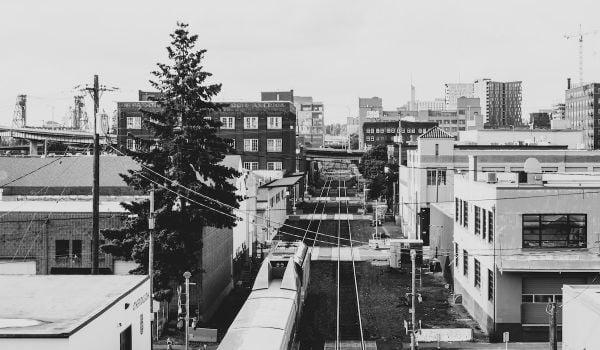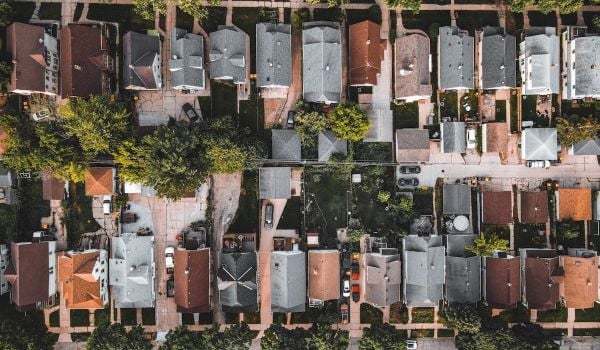We all hate the poor door. I have seen dismay over the morality of the poor door from people who do not support public housing subsidies, from friends who live in public housing, and from Marxist academic colleagues. Thanks to New York’s recent approval of a plan for a 33-story luxury condo building with a separate entry for tenants residing in the publicly subsidized rent-stabilized units, the poor door discussion rages on. The poor door is the new easy enemy; it is to housing injustice what Donald Sterling is to racial prejudice.
This righteous disgust nationwide is, in one way, refreshing and hopeful to me. Still, I believe that some context is necessary.
Just this week in Chicago, for instance, we witnessed an outcry caused by media coverage of Chicago Housing Authority voucher recipients who were using the non-poor door. Local news reported “live from the scene” from the front entrance of a luxury building where one family lived in one affordable unit.
Let’s be clear, inclusivity is going to make or break the city of the 21st century. Global pressures on cities and the current state of urban politics are precipitating the segregation of our cities by income. This segregation has tremendous moral implications and a considerable economic cost.
One of the more politically palatable — but yet still uncomfortably progressive in some circles — ways of insuring that our cities do not become landscapes of gleaming glass towers within decay and despair is through the use of “set asides.” Simply stated, set asides are tools of urban policy that require a developer whose project is likely to increase the cost of housing in an area to “set aside” some units that will be affordable.
There are at least four major questions with such a plan.
First of all, what is affordable? Suffice it to say that if affordable requires a six-figure income, it is likely going to exclude those most in need of affordability. Second, we have the dignity question: Will the design and materials of the housing provide a suitable place to live, or do they diminish the dignity of those within? Third, how long are the units going to stay affordable? (Is the developer only required to have some units be affordable for a year?)
But let’s put aside these three immense issues for a moment. The fourth question and the one relevant here is: Where are the affordable units going to be built?
The worst and first approach, let’s call it approach A, is for affordable units to be built nowhere. In such a scenario, city leaders are grateful to the developer that any residential development is occurring at all. Or perhaps they do not think ahead to the cumulative effect — what my colleague Peter Marcuse terms exclusionary displacement — that such development will have on the affordability of housing in the neighborhood.
A second possibility, we’ll call it B, is that affordable units are built in one of the city’s high-poverty neighborhoods. A groundbreaking takes place, and shiny, cheaply built rental units go up in a fabric of blight. The developer is celebrated for its philanthropy and sense of civic responsibility. The new occupants celebrate having the nicest home on the block. “Only in America,” onlookers say.
Option C is that affordable units are built in a newly gentrifying neighborhood. Some of the students, artists and old-timer ethnic community living there may not mind it very much. Others, perhaps with new homeowners leading the charge, will complain that their neighborhood is getting “dumped on” with uses other neighborhoods do not want. City leaders may or may not push back against this NIMBYism.
I will pause here for a moment to note that, in some cases, option B or C is what relevant community leaders fighting for affordable housing actually want. They fear gentrification (option B) or further gentrification (option C.) And they don’t want to live in a luxury tower; they want to live in their community. Of course, many folks who live in the luxury tower (see D through F below) like these options, because they want the “riffraff” to stay in their proper place.
Option D is that affordable units are built in the same neighborhood as the luxury development. This would actually be seen as quite progressive in many circles. There would certainly be some neighborhood NIMBY resistance to this in most contexts. Only political leadership with a commitment to such development would weather the resulting storm. The resistance might result in a compromise to have the housing placed on the fringe of the neighborhood or in perhaps a marginal semi-industrial zone where it would be seen as an improvement.
Let’s pause again to note that Options B-D could very well amount to “poor buildings,” built in relatively marginal settings with inferior materials. Yet, they would likely garner no media coverage and all the attendant outrage. What’s more, such units, now de-linked from the high-priority luxury development, might be built many years after the luxury units or even forgotten altogether. But let’s continue with the more pertinent scenarios.
Option E, most relevant here, is that affordable units are built on the same land as the luxury development, essentially in a building (with a separate door) within the building. The buildings are separate in some ways, but the building shares in many cases the luxury building’s quality materials and design, and residents have physical access to the same block as those in the luxury development.
Finally, option F, akin to the scenario that is unfolding this week in Chicago, is that typical market-rate units within the luxury building (although perhaps the smaller, less expensive ones) are rented — in this case by the Chicago Housing Authority — at an affordable price to those in need of affordable housing. Of course, as with the poor door, this granting of a handful of leases within luxury buildings — one in a building here, three in a building there — has seized media attention for its symbolism. It too is seen as “unjust,” but for the opposite reason; rather than lacking dignity, it is just a bit too dignified.
Of course, it is disgusting to even have to express that every resident should enter through a main entrance, an entrance of dignity. The idea of residents entering some type of back alley or service door to their home is unacceptable. In making this the focus, we are being distracted into an attention-grabbing and very visual battle — we can picture the different door. But we are losing sight of the context I have outlined here. As far as inclusion goes, for better or for worse, the poor door is about as good as the U.S. gets precisely because many of the people expressing outrage over the poor door would not support any of the set aside schemes outlined above at the ballot box.
The Equity Factor is made possible with the support of the Surdna Foundation.

John Joe Schlichtman is an associate professor of sociology at DePaul University. He is the author of “Showroom City: Real Estate and Resistance in the Furniture Capital of the World,” and the coauthor of “Gentrifier,” with Jason Patch and Marc Lamont Hill. He is also a 2016 Next City Vanguard.

















